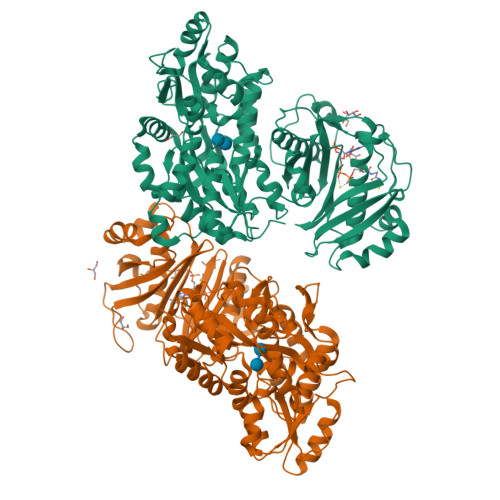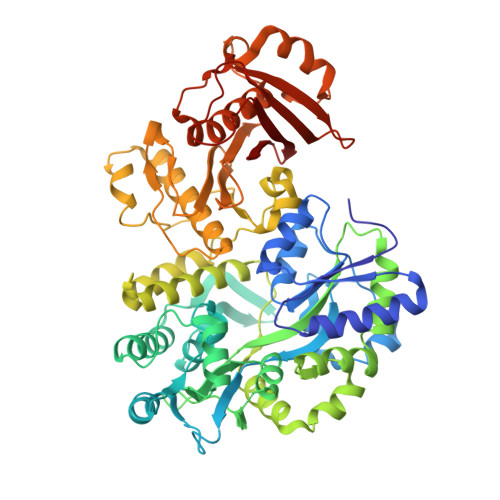Crystal structure of the essential Mycobacterium tuberculosis phosphopantetheinyl transferase PptT, solved as a fusion protein with maltose binding protein.
Jung, J., Bashiri, G., Johnston, J.M., Brown, A.S., Ackerley, D.F., Baker, E.N.(2014) J Struct Biol 188: 274-278
- PubMed: 25450595
- DOI: https://doi.org/10.1016/j.jsb.2014.10.004
- Primary Citation of Related Structures:
4QVH - PubMed Abstract:
Phosphopantetheinyl transferases (PPTases) are key enzymes in the assembly-line production of complex molecules such as fatty acids, polyketides and polypeptides, where they activate acyl or peptidyl carrier proteins, transferring a 4'-phosphopantetheinyl moiety from coenzyme A (CoA) to a reactive serine residue on the carrier protein. The human pathogen Mycobacterium tuberculosis encodes two PPTases, both essential and therefore attractive drug targets. We report the structure of the type-II PPTase PptT, obtained from crystals of a fusion protein with maltose binding protein. The structure, at 1.75Å resolution (R=0.156, Rfree=0.191), reveals an α/β fold broadly similar to other type-II PPTases, but with differences in peripheral structural elements. A bound CoA is clearly defined with its pantetheinyl arm tucked into a hydrophobic pocket. Interactions involving the CoA diphosphate, bound Mg(2+) and three active site acidic side chains suggest a plausible pathway for proton transfer during catalysis.
Organizational Affiliation:
Maurice Wilkins Centre and School of Biological Sciences, University of Auckland, Auckland, New Zealand.






















